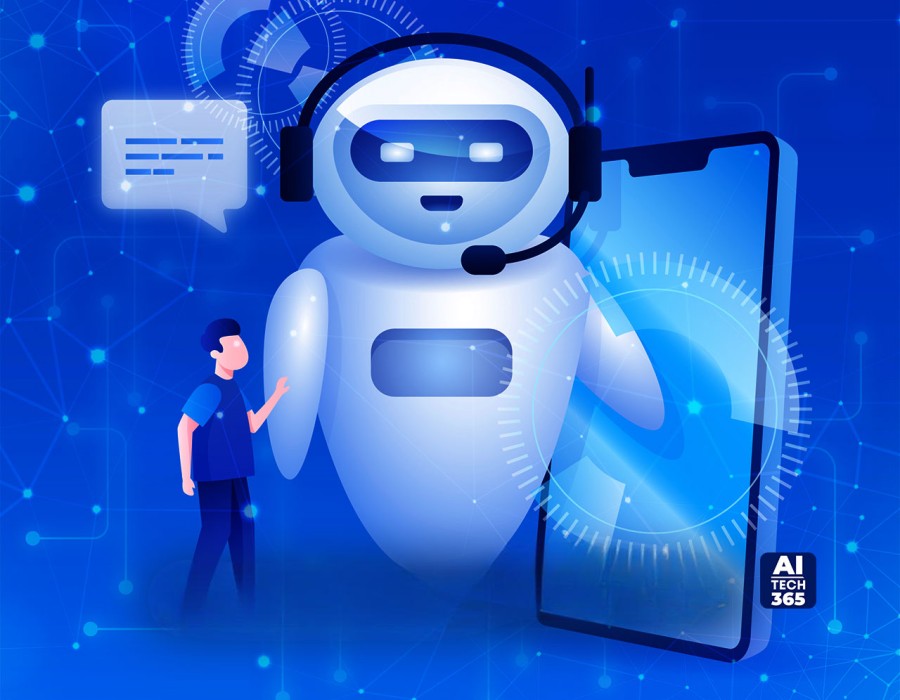In the fast-paced digital landscape of today, AI (artificial intelligence) assistants have revolutionized our interactions with technology. These intelligent tools serve as more than just facilitators for tasks; they function as digital companions, simplifying our daily lives. From aiding in mundane chores to transforming business customer service strategies, AI assistants have become ubiquitous. Let's delve into their functionalities, technologies, and future prospects.
What is an AI Assistant?
An AI assistant, also referred to as a virtual or digital assistant, is a sophisticated software entity designed to interpret and respond to natural language inquiries much like a human would. Unlike conventional chatbots that depend on pre-programmed responses, AI assistants utilize advanced algorithms, including natural language processing (NLP) and machine learning, to understand context and deliver more personalized interactions.
According to Statista, by 2024, the global number of digital voice assistants is expected to reach 8.4 billion, exceeding the Earth's human population. Over the years, these digital companions have progressed from basic rule-based systems to adaptive, context-aware agents capable of meaningful dialogue across various platforms.
Capabilities of AI Assistants
Here’s an overview of the diverse functionalities AI assistants offer:
- Task Automation: AI assistants efficiently handle tasks typically performed by human aides, such as dictation, reading messages, finding contacts, scheduling, making calls, and sending reminders.
- Voice and Text Interaction: They engage users through both voice and text, using NLP and machine learning to interpret and respond to inquiries naturally.
- Information Retrieval: AI assistants can pull information from multiple sources to answer user questions, including providing weather forecasts, summarizing news, and delivering sports updates.
- Smart Home Control: Many AI assistants manage smart home devices, enabling users to control lighting, adjust temperatures, play music, and execute tasks via voice commands.
- Personalized Recommendations: They learn user preferences over time, offering tailored suggestions for movies, restaurants, and books to suit individual tastes.
- Productivity Enhancement: AI assistants help users manage schedules, set reminders, create to-do lists, and send notifications to improve organization and efficiency.
- Language Translation: Certain digital assistants offer real-time translation, making them invaluable for travelers or those communicating across language barriers.
- Customer Support: AI assistants are increasingly utilized in customer support to address frequently asked questions, provide troubleshooting advice, and offer personalized recommendations based on user needs.
The Technology Behind AI Assistants
The core technology enabling AI assistants is natural language processing (NLP), a branch of AI that focuses on enabling computers to understand, interpret, and generate human language. NLP algorithms dissect the structure and meaning of text inputs, allowing digital assistants to extract significance, infer intent, and generate relevant responses. Additionally, machine learning techniques, such as deep learning and neural networks, enhance these systems, enabling them to learn from data and improve their performance continuously.
Advantages of AI Assistants
The utilization of AI assistants offers several significant benefits:
- Cost Efficiency: By automating repetitive tasks, AI assistants reduce the need for human intervention, thereby lowering operational costs.
- Increased Productivity: These assistants streamline workflows and provide immediate responses, enhancing overall productivity and efficiency.
- Improved User Experience: AI assistants deliver personalized interactions that cater to individual preferences, fostering higher satisfaction and loyalty among users.
- Round-the-Clock Availability: Unlike human agents, AI assistants can operate 24/7, providing uninterrupted support and services.
- Resource Allocation: By automating routine functions, AI assistants allow organizations to focus human resources on strategic initiatives, promoting innovation and growth.
Future Trends in AI Assistants
As technology evolves, several trends are shaping the future of AI assistants:
- Advancements in Voice Recognition: Future AI assistants will boast improved voice recognition capabilities, facilitating more accurate and natural interactions. Digital assistants like Amazon Alexa and Google Assistant are continually refining their understanding of diverse accents, languages, and speech patterns.
- Enhanced Natural Language Understanding: AI assistants will further develop their abilities to comprehend human language nuances, context, and intent. For instance, customer service chatbots may incorporate sentiment analysis to gauge emotions and tailor responses effectively, enhancing communication.
- Integration with IoT: The integration of AI assistants with Internet of Things (IoT) devices will foster seamless interactions across interconnected ecosystems. For example, smart home systems like Apple HomeKit and Samsung SmartThings can collaborate with virtual assistants to manage connected devices through voice commands.
- Emotional Intelligence: Future AI assistants may possess emotional intelligence capabilities, enabling them to interpret and respond to human emotions. Virtual therapists equipped with AI could analyze voice tone and facial expressions to offer personalized support to users experiencing stress or anxiety.
Conclusion
AI assistants are redefining our interactions with technology and reshaping business operations in the digital era. By harnessing the capabilities of artificial intelligence, these intelligent agents empower individuals and organizations to accomplish tasks more efficiently, make informed decisions, and enhance user experiences. As AI assistants continue to evolve, businesses must embrace this transformative technology to drive innovation, improve competitiveness, and create value for customers and society at large.





Comments